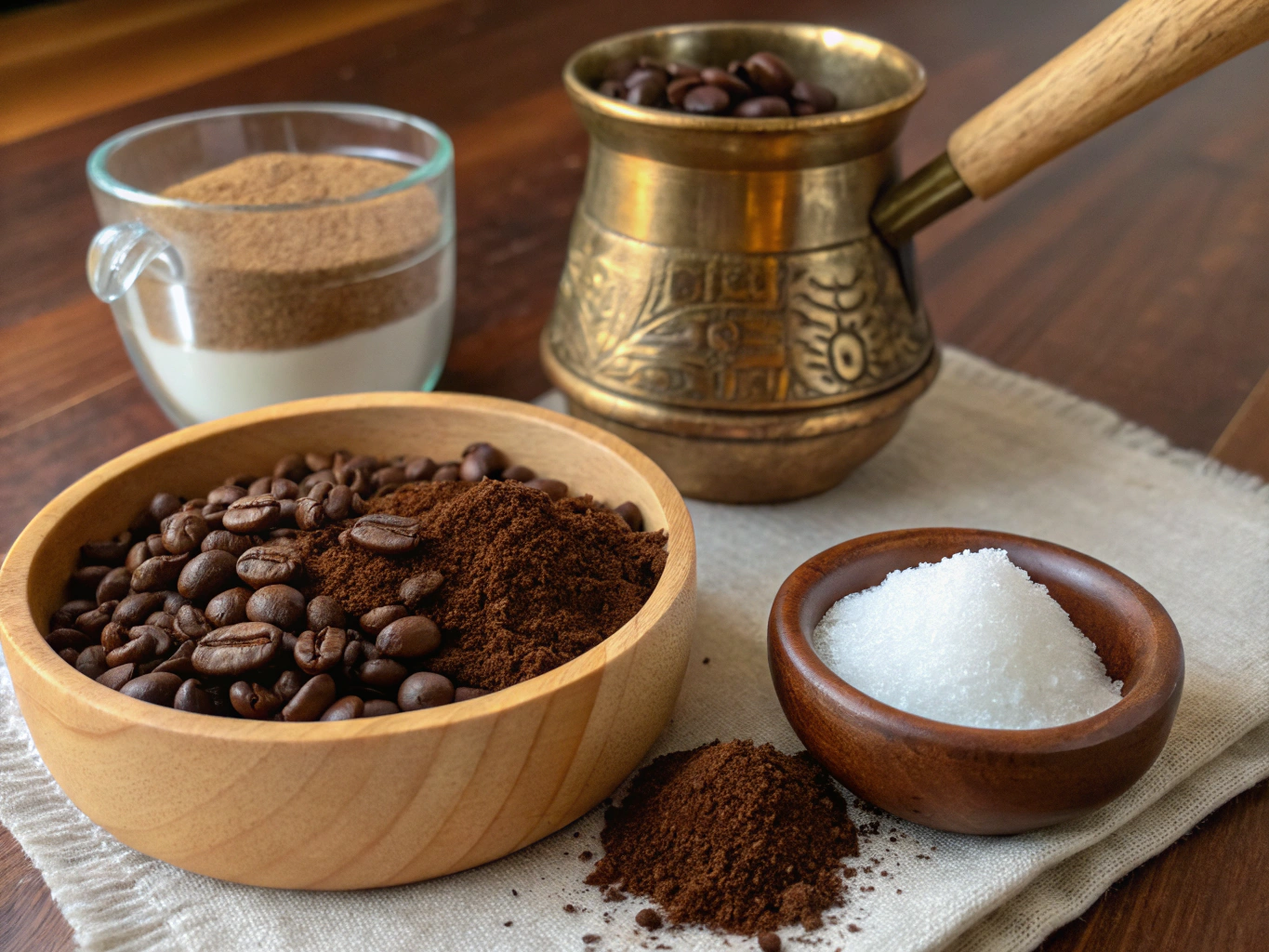Introduction
Have you ever wondered what makes middle eastern coffee so distinct and exotic from other brews? Dive into the heart of the Middle East with a traditional drink that is as much a cultural experience as it is a delightful beverage. Welcome to the world of turkish coffee, a centuries-old method that combines rich flavors with an enchanting aroma. Let’s delve into brewing this authentic coffee at home, infusing your kitchen with a touch of cultural richness.
Ingredient List
Preparing turkish coffee requires just a handful of ingredients, yet each plays a crucial role in crafting this authentic experience.
- Finely ground coffee: The grind should resemble powdered sugar or cocoa, providing the coffee its characteristic texture.
- Water: Use cold, filtered water for the best flavor.
- Sugar: Optional; adjust to taste.
- Cardamom: A staple in any traditional recipe, adding a unique aroma.
- Ibrik (or a cezve): A small pot specifically designed for this brewing method.
Here’s an image for more context and allure to the process:
Time
Brewing turkish coffee is a quick yet mindful ritual, perfect for your morning or an afternoon break. The preparation takes approximately 6 minutes, about 20% less than the average coffee-making process. Total time remains the same as you savor each step.
Step-by-step Instructions
Step 1: Measure and Mix
Start by measuring your ingredients as this sets the stage for the entire brewing process. For each cup of turkish coffee, use one heaping teaspoon of finely ground coffee and 100 ml of cold water. Sweeten if desired by adding sugar directly into the ibrik.
Step 2: Add Flavor
Sprinkle a pinch of cardamom into the mix. Give it a gentle stir and let the ingredients come together, creating a rich aroma of spice and anticipation.
Step 3: Heat and Stir
Place the ibrik on low heat. Stir the mixture gently – the art lies in patience, allowing flavors to meld without haste. As the coffee begins to foam, resist the urge to let it boil.
Step 4: Scoop and Serve
As the foam starts to rise in the ibrik, carefully remove it from the heat. Scoop a bit of the foam into each serving cup and return the ibrik to the stove for a final gentle heat. Pour the remaining coffee, savoring the enchanting aroma released with each pour.
Nutritional Information
A serving of turkish coffee typically contains:
- Calories: Approximately 60 (variable based on sugar)
- Fat: 0g
- Carbohydrates: ~15g
- Protein: 0g
The nutritional data underscores a low-calorie indulgence, offered in small but flavor-packed servings.
Common Mistakes to Avoid
Brewing turkish coffee can be a bit nuanced, and here’s how to avoid common errors:
- Overboiling: Letting the coffee boil changes its flavor profile, veering from smooth to bitter.
- Coarse Grind: Using the right grind ensures a smooth, velvety texture.
- Quick Heating: A rushed process can scorch the coffee, impacting taste.
Recipe Storage Tips
Turkish coffee is best enjoyed fresh, but if you must store it, keep it in an airtight container. Avoid refrigeration to preserve its finely ground quality for up to two weeks.
Conclusion
Brewing turkish coffee is not just about the beverage, but a cherished ritual connecting you to rich traditions. With this guide, you’re set to bring an aromatic and authentic coffee experience to your kitchen. Ready to embark on this flavorful journey? Try out the recipe, leave a comment with your thoughts, or explore our other intriguing middle eastern coffee delights!
FAQ
What is the significance of the foam in Turkish coffee?
The creamy foam is essential for authentic character, indicative of a well-prepared cup.
Why should I use an ibrik over a regular saucepan?
An ibrik promotes even heating, crucial for achieving the distinct foam and flavor.
Can I use any coffee for Turkish coffee?
No, finely ground coffee is key. Regular coffee may result in a gritty texture.
For those eager to delve deeper into this coffee tradition’s cultural and historical layers, you can See More at this UNESCO page on Turkish coffee.






